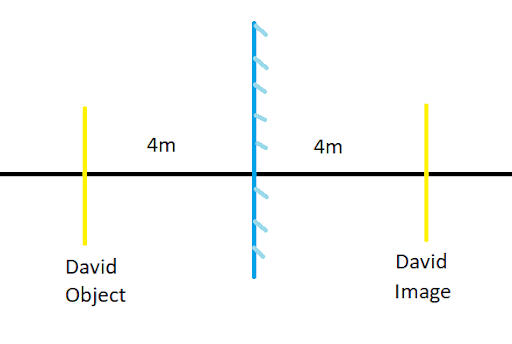How Can Light Class 7 Questions And Answers Help You Prepare For Exams Effectively?
FAQs on NCERT Solutions For Class 7 Science Chapter 11 Light
1. What are the main concepts explained in the NCERT Solutions for Class 7 Science Chapter 11 Light?
The NCERT Solutions for Class 7 Science Chapter 11 Light cover key concepts including properties of light, reflection, refraction, types of mirrors and lenses, image formation, differences between real and virtual images, and phenomena such as dispersion and rainbow formation—all aligned as per CBSE 2025–26 syllabus.
2. How does the NCERT Solution describe a virtual image in the context of Class 7 Science Light Chapter?
A virtual image is an image in which the reflected or refracted rays appear to meet but do not actually converge. Virtual images cannot be displayed on a screen. Plane mirrors and convex mirrors always produce virtual, erect images.
3. What are the differences between convex and concave lenses, according to Class 7 Science Chapter 11 NCERT Solutions?
- Convex lens: Thicker in the middle, thinner at edges; can form both real and virtual images; converges light rays.
- Concave lens: Thinner in the middle, thicker at edges; always forms virtual, erect, and diminished images; diverges light rays.
4. Why can't a real image be formed by a concave lens, as per the solutions for Class 7 Science Chapter 11?
A concave lens always produces diverging rays, so the refracted rays never intersect on the same side of the lens as the object. Thus, concave lenses cannot form a real image; only virtual, erect, and diminished images are possible.
5. What advantages do Vedantu's NCERT Solutions provide for mastering Light in Class 7 Science?
Vedantu’s NCERT Solutions offer stepwise explanations, CBSE-patterned answers, clarifications for tricky concepts like reflection/refraction, and multiple question formats. Visuals and real-life examples make Learning Light more relatable, promoting higher accuracy in exams as per 2025–26 CBSE guidelines.
6. What is meant by the reflection of light according to the NCERT Solutions for Class 7 Science Chapter 11?
Reflection of light is the process where light bounces off a polished or shiny surface (like a mirror), changing its direction. The reflected rays follow the law of reflection, where the angle of incidence equals the angle of reflection.
7. Which main principles of light are elaborated in Chapter 11 of the Class 7 NCERT Solutions?
The solutions discuss these main principles: light travels in a straight line, reflection and refraction phenomena, formation and type of images, laterally inversion, spherical mirrors and lenses, dispersion of white light through a prism, and daily-life applications of these concepts.
8. How do NCERT Solutions for Class 7 Science Chapter 11 aid in understanding image formation by mirrors and lenses?
The solutions detail how plane and spherical mirrors, as well as convex and concave lenses, form images based on light’s behaviour with surfaces. They provide solved problems, diagrams, and practical scenarios for clarity on image position, size, and orientation.
9. What are the core properties of the image formed by a plane mirror, as per the NCERT Class 7 Science Solutions?
- The image is virtual, erect, and of the same size as the object.
- The image distance behind the mirror equals the object’s distance in front.
- The image is laterally inverted (left-right reversal).
10. How does the NCERT Solution for Class 7 Science Chapter 11 explain the concept of lateral inversion?
Lateral inversion is the phenomenon where left and right sides of an object appear reversed in the plane mirror image. This concept helps explain why text appears flipped in a mirror.
11. What if a student mistakes a convex lens for a concave lens? How might this impact their understanding of light in Class 7 Science?
If a convex lens is mistaken for a concave lens, students may wrongly believe that the lens always diverges light or forms only virtual images. This misconception hinders understanding image formation principles and can affect answers to higher-order CBSE questions involving ray diagrams or real-life lens applications.
12. In Class 7 Science Chapter 11, why does a concave mirror form both real and virtual images, but a convex mirror does not?
A concave mirror's inward curve allows reflected rays to actually meet (real image) or appear to meet (virtual image) based on object position. A convex mirror, being outwardly curved, always causes rays to diverge, so the image is invariably virtual, diminished, and located behind the mirror.
13. Why is it important for CBSE Class 7 students to distinguish between real and virtual images in NCERT Solutions for Light?
Distinguishing between real and virtual images is crucial because exam questions often ask about their formation, properties, and applications (e.g., mirrors in vehicles versus magnifying glasses). A clear understanding ensures accurate answers as required by recent CBSE marking schemes.
14. What common student mistakes does the Light Chapter’s NCERT Solution help clarify?
Vedantu’s NCERT Solutions address frequent errors such as misidentifying image types, confusing lenses and mirrors, and incorrectly applying the law of reflection or refraction. Stepwise worked examples and conceptual summaries help prevent these mistakes.
15. How can Class 7 Science Chapter 11 Solutions help students solve numerical problems involving light?
The solutions provide stepwise mathematical reasoning for ray diagrams, image distances, lateral inversion effects, and speed calculations (e.g., mirror and object movement). This builds problem-solving skills needed for CBSE-based short and long-form questions.


























